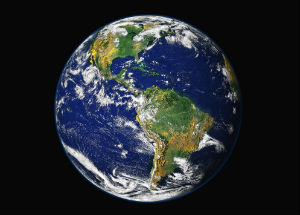Small climate change effects can be the most obvious
12 March 2020

Relatively small changes to the climate in some parts of the world can be more obvious than larger changes elsewhere, according to a new study.
A team led by the University of Reading looked at how climate change has already changed temperatures and rainfall patterns worldwide to the point that they would be unfamiliar to people living at the end of the 19th century. Crucially, they then examined how these changes compared with climate fluctuations already experienced in different regions of the globe.
They found mid-latitude countries like the UK and US were experiencing relatively large changes in temperature compared to tropical regions, but the experience of these changes were being masked by the fact the weather in these countries is more erratic.
Conversely, the smaller changes in countries in the tropics were found to be the most obvious and may be having a greater impact on society because people are used to a generally more settled climate.
Professor Ed Hawkins, climate scientist and lead author at the University of Reading and NCAS, said: “These findings are important as it shows there is no one-size-fits-all approach to adapting to climate change.
“Climate change impacts in some countries are being hidden by their own changeable weather. People in these countries are already used to coping with swings between hot and cold or wet and dry conditions, meaning even sizable changes to their climate may be less obvious. Alternatively, countries with steady climates are more likely to notice their warming climate, despite the changes being less dramatic.
“Where climate change is smaller, we run the risk of thinking it is insignificant. We need to realise where climate change might be hiding in plain sight because this tends to be regions which are more vulnerable and less able to adapt.”
Professor Manoj Joshi, a co-author at the University of East Anglia, said: “An example of such noticeable changes might be temperatures in the warmest months of the year exceeding the limits that societies have become familiar with over the last century.”
The study, published in the AGU journal Geophysical Research Letters, was by scientists from the University of Reading, University of East Anglia, Victoria University of Wellington, University of Oxford, University of Melbourne and University of Chile.
